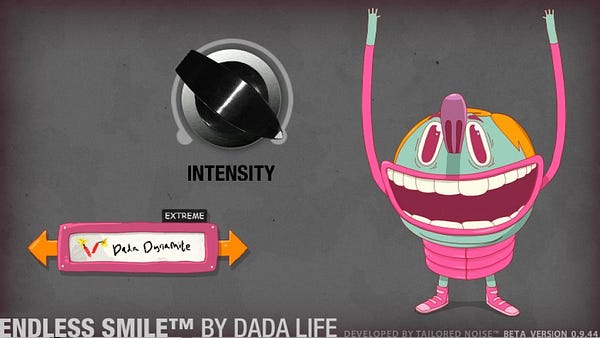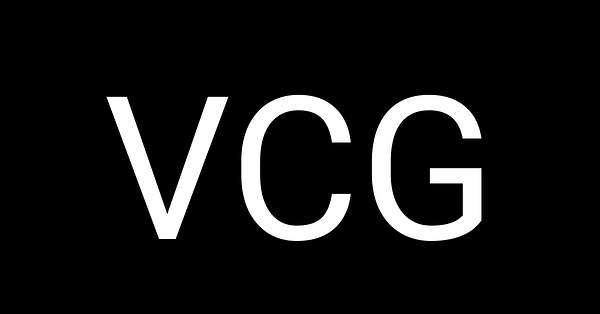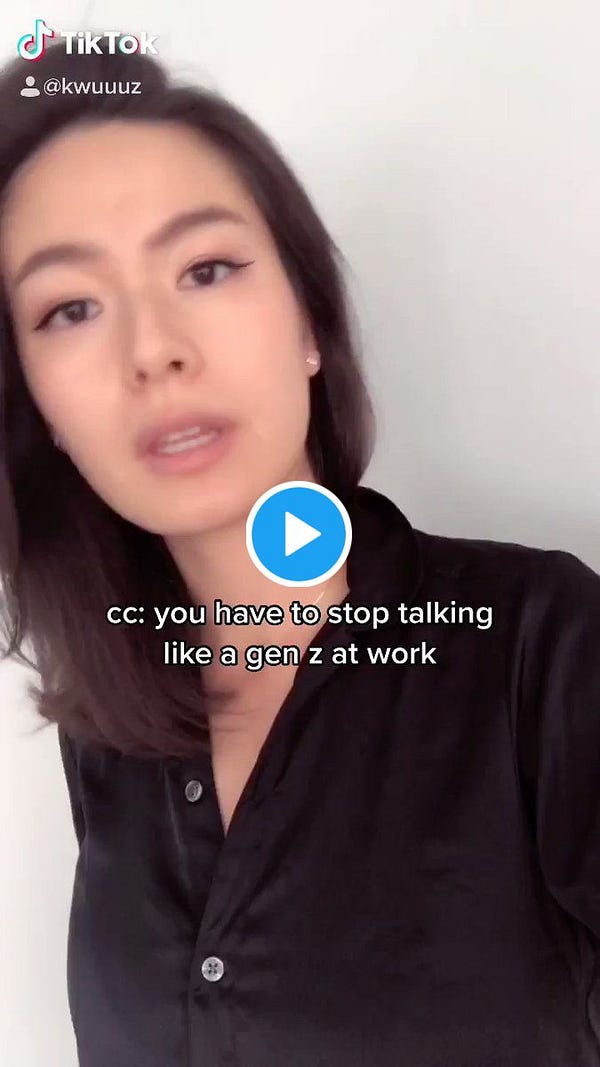👉 TikTok & The Future of Music
How new music distribution and creation tools are killing the 3 minute song

Yo! ✌️ I’m Brett! I am a founder and former Cognitive Science researcher. Social Studies is a semi-weekly newsletter for people building great products for humans. It includes recaps of what happened on Tech Twitter every week plus deep analysis using frameworks from Psychology, Economics, and the other Social Sciences.
✨ TLDR
There was an interesting thread on the future of music last week that got a lot of attention. I’ve been straddling the music and tech worlds for a while, so I thought I’d dig a little deeper on the topic:
🔮The future will look a lot like the past - the medium is the message so the future of music is dependent on how music is created and consumed.
🚀 TikTok has become the defacto growth engine - TikTok has been responsible for minting virtually every new artist on the Spotify Top Charts. As a result, songwriters are optimizing for the platform.
🔉 AirPods will unlock multi-dimensional music - AirPods with spatial audio connected to smartphones measuring other data points will allow music producers to create much more dynamic music that changes based on location and other triggers.
🤖 Sampling and AI will democratize creation - Like nocode tools abstract away programming, sample marketplaces and AI tools are abstracting away the most complex parts of the music creation process.
🤔 So what happens next? - Bifurcation in music will be truly palpable, a new generation of music companies will emerge, consumption and creation will blur, immersive music will unlock new revenue, and influencers will rule it all
🔮 The future will look a lot like the past
Marshall McLuhan’s famous saying “the medium is the message” applies to all content, including music. McLuhan would say
Music is a product of how it is created and how it is consumed.
Example - the 3 minute song
Songs are 3 minutes long because that’s how much could fit on a single, which was the only way to get your music on the radio. Songs remained 3 minutes long well-after that because radio stations still monetized at 3 min - labels kept songs to 3 min to make more money per hour.
Popular songs these days always have the chorus within the first 30 seconds to capture listeners attention past the 30 second monetization mark on Spotify,
As a result, the future of music is tied to technological development around music creation and consumption.
As I mentioned in Metaphors We Build By, it’s really hard to conceptualize what the future will look like. That said, it’s a lot easier when we focus on the medium rather than the message.
So to understand the future of music, we must ask, what is the future of music technology?
🚀 TikTok has become the defacto growth engine
Over the last few years, TikTok has been responsible for minting virtually all of the top new artists on Spotify.

How? TikTok has become the defacto tool for growth and discovery in music.
Before TikTok, landing a collaboration typically takes hours of emails, coordination, and other annoyances. I used to send dozens of messages out to different artists on soundcloud at a time, and even when I caught one’s attention, the collab would fall through for one reason or another.
Tik Tok changes that. The platform is centered around remixing, which means collaboration is incredibly easy.

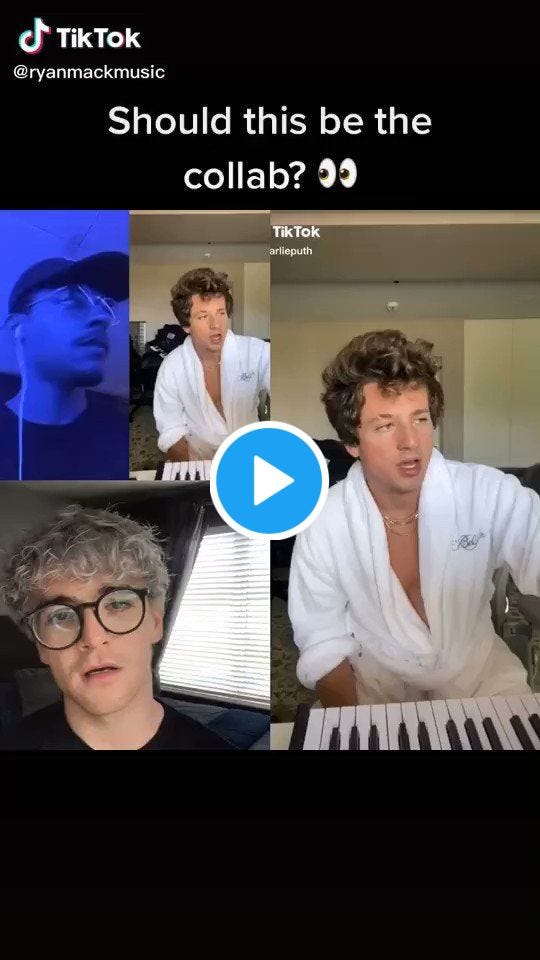
For every popular artist that posts a song, there are thousands of remixes and remixes of remixes. This not only allows artists to get discovered by remixing similar, more popular artists but it also ends up leading to official collaborations later posted to Spotify.

Naturally, since TikTok has become such a reliable growth tool, songwriters are changing how they write - much in the same way journalists changed how they wrote to cater to the Facebook newsfeed.
Jason Derulo is a prime example. Derulo first broke out when he released “Whatcha Say” - a remix of Imogen Heap’s popular song “Hide and Seek.” Since then, he’s used this formula of writing his own songs on top of popular songs numerous times, and now that this is standard practice in TikTok, he has become one of the biggest stars on the platform.
This summer, he wrote “Savage Love” using the music from one of the most viral songs on TikTok, “Laxed - Siren Beat” by Jawsh 685. Both Savage Love and the LAxed had numerous TikTok dance challenges associated with them and are still on the Spotify Top Charts as I write this.
Being used in viral TikTok (dance) challenges is the outcome TikTok songwriters strive for.
Many have pointed to Drake’s “Toosie Slide” as being written for TikTok. That may be true, but musicians have written songs with the intention that they become popular dances for generations - think “Twist and Shout” by The Beatles. TikTok has just created a growth engine for these dances that was previously unimaginable.
Musicians are also using TikTok to AB test 15 second songs before recording full versions. Everyone from pop stars like Charlie Puth (as seen above) to rising stars like Tiagz is doing this.

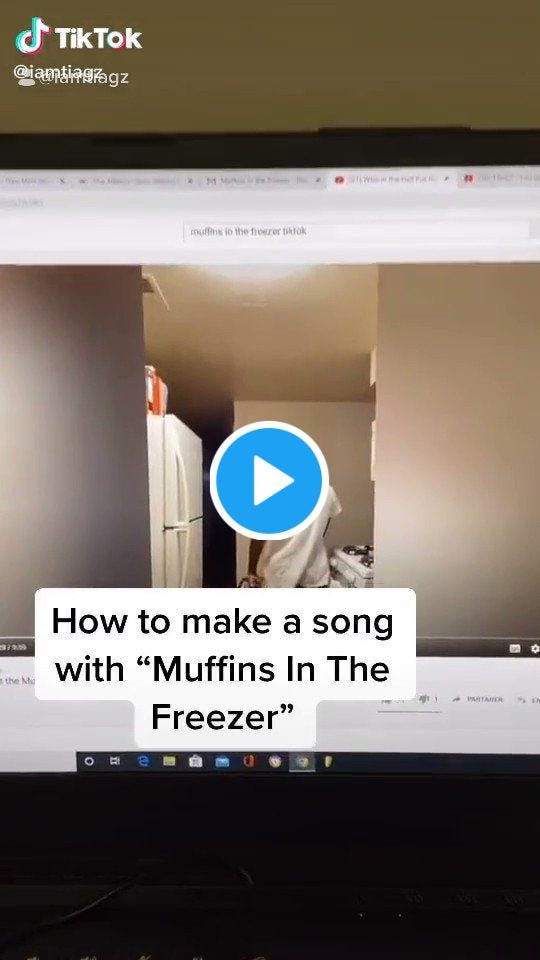
🔉 AirPods will unlock multi-dimensional music
One of the main ways people will be consuming music in the future is through AirPods equipped with spatial audio tied to phones tracking biometrics and GPS.

Historically, music has been two dimensional - different sounds happen at different times and they can only be heard on the right or left side. But AirPods, smartphones, and other biometric sensors reaching mass adoption will allow for music to be truly multidimensional.
Spatial: music can come from up down left or right
Geo: music coming from two blocks away or around the corner
Biometric: music can change depending on heart rate, glucose, etc.
Productivity: music can change depending on your calendar events, time of day, etc.
Unlocking this multi-dimensionality will require new music creation tools not dissimilar to those used for video game music.
🤖 Sampling and AI will democratize creation
The technology industry is centered around abstracting away complexity to democratize creation:
React abstracts javascript
Zapier abstracts away scripting
Webflow abstracts away web development

Of course this has also been the case in music technology:
Digital audio workstation software (Ableton, Logic Pro X) abstract away recording studios. Now anyone with a laptop can create professional quality music from their bedrooms like Billie Ellish does.
Digital sampler instruments (Kontakt) abstract away real instruments. Now you can add any obscure instrument to a song without hiring a session musician.
Plugins and presets abstract away audio engineering. There are now tools that turn complex mixing and mastering techniques into single nobs.
This trend has been accelerating dramatically in recent years due to two breakthroughs:
🎨 Sample Marketplaces
Sampling has been popular in music for a long time, but the emergence of sample marketplaces like Splice has made it truly widespread. On Splice’s website, you can download loops of virtually any instrument, drag and drop them into your DAW software and have a professional sounding song with not much more effort than that.
When music creation only requires dragging and dropping, many more people are able to create music who would not have been able to before.
🤖 Artificial Intelligence
Over the last few years, breakthroughs in AI have impacted virtually every element of the music creation process from from isolating tracks to lyric and voice generation to full-blown song generation.


While a number of musicians like Taryn Southern have created albums and songs entirely written by AI recently, these have mostly been stunts. That said, a lot of AI research has already found its way into real products.
Izotope Nectar, for example, uses AI to automatically do vocal processing (typically one of the most difficult parts of the production process).
I worked on a hackathon project called The Trap Factory that auto-generated trap beats. Instead of rappers spending time learning how to make beats, they could use our AI tool to generate beats in whatever style they prefer.
I believe that over the next decade, we’ll see the complete abstraction of music creation, where musical taste is the only requirement for creating professional quality music.
🤔 So what happens next?
There has never been so much change happening in the music industry all at once. The confluence of new distribution platforms (TikTok), new hardware (AirPods), and new creation tools (using AI and sampling) will dramatically shift the industry over the coming years.
It’s safe to say, the 3 minute pop song is knocking on Heaven’s door.
Here are some predictions:
👯♂️ Bifurcation will become truly palpable
When TV first came out, the video content industry had its first bifurcation event. Suddenly there were two places to consume video content (TV and theaters) rather than just one. Today, the industry has bifurcated hundreds of more times with the advent of computers and the various video consumption tools on them.
In music, the bifurcation hasn’t been as palpable - despite the presence of video game music, film music, etc. the vast majority of music most people listen to on a daily basis follows the classic 3 min long pop structure.
Thanks to TikTok, AirPods, AI and other developments, this is changing. Within a few years, I believe we’ll experience multiple different kinds of music on a daily basis.
Classic (e.g. Spotify) - 3 minutes long just like the songs you’ve been listening to your whole life will still exist in the same way that TV still exists.
Miniature (Tik Tok) - 15-30 second loops meant to be added on to and remixed.
Immersive (gaming) - dynamic music that changes depending on various inputs, mostly oriented around some functional objective (relaxation, working out, focus)
🏢 A new generation of music companies will emerge
TikTok as a company will capitalize on their position upstream of Spotify to build out their own record label, streaming platform and other services.
Brands and content companies will try to own distribution for relevant categories of functional music. Calm or Headspace may become Spotify for meditation and relaxation music, Dipsea for love-making music, Future.fit or Nike for workout music, etc.
As music creation and distribution tools get easier, we may also see individual creators distributing (mostly functional) music directly to their fans. Anne-Laure Le Cunff (Ness Labs) could create productivity music, Boreta (Glitch Mob) could create meditation music (and already is), etc.
👨🎨Creation and consumption will blur
Professional quality music creation will be accessible to everyone via easy-to-use (mobile) applications that utilize samples, presets, and AI. We will see the music industry get eaten from the bottom like the photography industry was after Instagram + smartphones were widespread.
Listening to music may involve creation to a degree as AI will be able to dynamically change out samples in songs as easily as AI changes out songs in playlists today.
Copyright law will obviously get really confusing.
💰 Immersive music will unlock new revenue opportunities
One of the reasons the streaming business model in music exists is because mp3s sound the same no matter where or when you listen to them, thus making them easy to pirate. Dynamic experiences like concerts and Barry’s Bootcamp classes cannot be pirated in the same way since each is unique.
Dynamic, immersive musical experiences that change dependent on location, orientation, biometrics, etc. could be monetized more effectively than music today for this same reason.
These experiences will likely be focused on functional music initially but eventually other types of artists may create them as a new way income stream.
🤩 Influencers will rule
In any market, as creation and distribution gets easier, brand becomes more important.



We’re seeing this play out in venture capital right now, where Twitter influencers are starting to run the show in the industry instead of traditional investors.
As tools for creation and distribution get easier in music and anyone is able to be a musician, people who have large followings will likely rule the top charts.
💉 Dopamine hits



📚 Long reads








